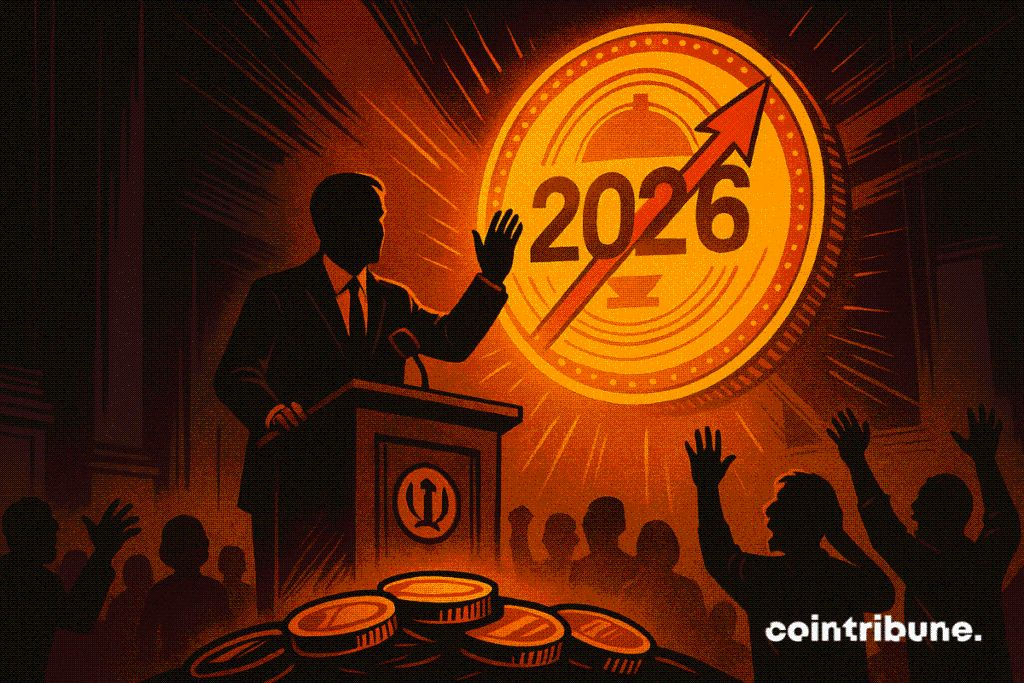Flat Tax Hike Under Discussion In French Government
The prospect of an increase in the flat tax resurfaces in budget discussions. Ahead of the 2026 finance bill, Bercy would consider raising the single flat tax, set since 2018 at 30 %. No decision has been made yet, but the return of this measure, long considered a fiscal marker of Macronism, is already causing tensions. In a context of structural deficit and revenue pressures, the stability of the savings tax framework could be called into question.

In brief
- The government is considering an increase in the flat tax as part of the 2026 budget, with a rate that could rise from 30% to 36%.
- This scenario, still undecided, aims to generate up to 1.44 billion euros in revenue to reduce the public deficit.
- This measure would challenge a fiscal pillar of Macron’s term, causing tensions within the majority itself.
- Economic circles warn of a fiscal shock risk that could weaken investment and confidence.
A budgetary measure considered for 2026
While the situation becomes very worrying for France , the idea of raising the PFU from 30 % to 33 %, or even up to 36 %, is among scenarios discussed in preparing the 2026 budget. At this stage, it is only a hypothesis studied by the government.
This is a prospect that comes back on the table, even if nothing has been decided. The objective is to mobilize new revenues to contain the public deficit, expected to be 4.7 % of GDP in 2026. Indeed, each percentage point increase of the flat tax would bring about 240 million euros, which would raise potential gains to more than 1.4 billion euros if the rate reached 36 %.
This scenario, although undecided, already fuels speculation. Since its establishment in 2018, the PFU at 30 % embodies an economic approach favorable to investment and tax simplicity. Its possible reconsideration thus represents a strategic turning point.
However, opinions differ. Some members of the majority fear “breaking a strong symbol of Macron’s term”, while others argue for a revision to meet budgetary imperatives. Several technical arguments support this reopening of the file :
- An increase of 3 points (from 30 % to 33 %) would generate about 720 million euros more ;
- A rise to 36 % would bring nearly 1.44 billion euros per year, according to internal estimates ;
- The flat tax remains lower than the tax burden on savings income in other European countries, which fuels debate on its social legitimacy ;
- Some in the majority believe that large capital holders can contribute more without harming the overall economic climate.
Increasing pressure around high net worth individuals and tax loopholes
Beyond the flat tax, it is the entire capital taxation that could be reconsidered in the coming months. The budget debate for 2026 fits into a broader dynamic, where other levers are also mentioned.
Among them, the highly publicized “Zucman tax”, a 2 % contribution on wealth exceeding 100 million euros, reappears as an alternative or complement to raising the PFU. Although this tax was rejected by the Senate after adoption by the Assembly, it remains politically active. In parallel, reflections are underway on tightening certain tax loopholes and possibly reducing exemptions overseas, within the framework of the LODEOM scheme.
The equation is delicate. The government intends to avoid a fiscal shock already denounced by several business representatives, notably the AFEP, which warns about the effects of such a shift on competitiveness, investment, and employment.
Prime Minister Sébastien Lecornu has, for his part, closed the door on a return of the wealth tax (ISF), while maintaining a trajectory of budget consolidation. In this context, raising the PFU could be seen as an intermediate compromise, politically less explosive but not without economic consequences.
For savers, an increase in the flat tax would directly affect the net yield of many investments, including those made in cryptos when they are not held in tax-advantaged accounts. This could also revive shifts toward the progressive scale, or even accelerate certain tax optimization strategies.
Disclaimer: The content of this article solely reflects the author's opinion and does not represent the platform in any capacity. This article is not intended to serve as a reference for making investment decisions.
You may also like
COAI Experiences Steep Price Drop: Opportunity for Contrarian Investors or Red Flag for Junior Gold Mining Stocks?
- COAI refers to both ChainOpera AI and junior gold miners' index, with this analysis focusing on the latter's market dynamics. - Junior gold miners (GDXJ ETF) fell 27% in six months amid dollar strength, inflation fears, and overbought conditions after a 128.8% rally. - Technical indicators show bearish signals: broken trend channels, negative volume balance, and RSI divergence, though long-term bull trends persist. - GDXJ's 163.9% surge outpaced gold bullion gains, creating valuation gaps, while ChainOpe

Silver Soars Amid Ideal Conditions of Policy Shifts and Tightening Supply
- Silver surged to $52.37/oz as Fed rate cut expectations (80% probability) and falling U.S. Treasury yields boosted demand for non-yielding assets. - China's record 660-ton silver exports and 2015-low Shanghai warehouse inventories intensified global supply constraints, pushing the market into backwardation. - Geopolitical risks (Ukraine war) and potential U.S. silver tariffs added volatility, while improved U.S.-China relations eased short-term trade concerns. - Prices face critical $52.50 resistance; Fe
XRP News Today: As XRP Declines, Retail Investors Turn to GeeFi's Practical Uses
- GeeFi's presale hits 80% of Phase 1 goal with $350K raised, targeting 3,900% price growth as XRP declines 20% monthly. - GEE's utility-driven features like crypto cards, multi-chain support, and 55% staking returns contrast with XRP's institutional dependency and shrinking retail base. - Deflationary tokenomics and 5% referral bonuses drive FOMO, positioning GeeFi as a 2026 crypto disruptor amid XRP's regulatory and adoption challenges.

Sloppy implementation derails MegaETH's billion-dollar stablecoin aspirations
- MegaETH abandoned its $1B USDm stablecoin pre-deposit plan after technical failures disrupted the launch, freezing deposits at $500M and issuing refunds. - A misconfigured Safe multisig transaction allowed early deposits, causing $400M inflows before the team scrapped the target, citing "sloppy execution" and operational misalignment. - Critics highlighted governance flaws, uneven access (79 wallets >$1M vs. 2,643 <$5K deposits), and 259 duplicate addresses, raising concerns about transparency and bot ac

